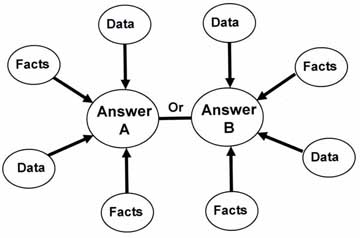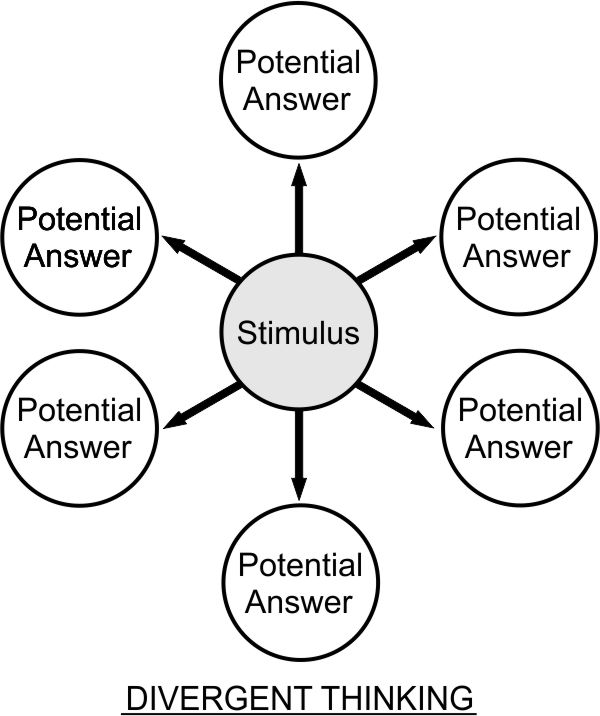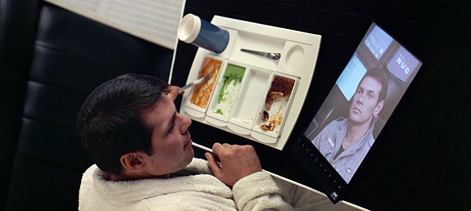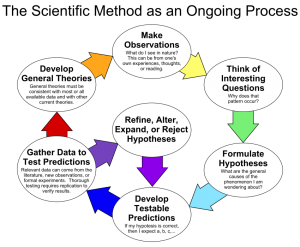In my first blog I talked about my problem solving process as a computer science student, and how learning the business thinking process will make me a better software developer in future. In this blog I want to conclude what I have learned in the d.studio course and how I can use them in my career.
If I ask you what the correct answer of 1+1 is, what will you tell me? You will probably say it is 2 and you are correct. Because we have all learned arithmetic since Kindergarten, and 2 is the only correct answer. The ability to produce correct answer to a standard question is called convergent thinking, a skill that does not require creativity, but knowledge and experience.
Source: https://en.wikipedia.org/wiki/File:Map_of_Convergent_Thinking.jpg#/media/File:Map_of_Convergent_Thinking.jpg
What if I ask you what is the correct answer of ?+? = 2? You may tell me it is 1+1, someone else may tell me it is 2+0, and both are you are correct. Because there are unlimited number of correct answer to this question, the answer 1+1 is just as correct as 3+(-1), or 1.5+0.5. The ability of creating ideas by exploring many possible solutions is called divergent thinking, a skill that requires both creativity, knowledge and experience to achieve a goal from many possible solutions. During our last lecture Professor Beausoleil asked us to come up with new usages of a hammer, and that was a good example of divergent thinking.
Source: https://commons.wikimedia.org/wiki/File:Final_divergent_thinking.jpg#/media/File:Final_divergent_thinking.jpg
A good real life example of divergent thinking would be the development of iPad. Tablet computer was nothing new, there has been many prototypes of wireless tablet devices since the beginning of 20th century. In fact, in the 1968 film “2001: A Space Odyssey”, a tablet computer appeared aboard the spaceship Discovery. In the 2000s, Microsoft reportedly spent more than $400 million developing the operating system and hardware for tablet devices, but only met with failure on the market.
Source: https://en.wikipedia.org/wiki/File:2001interview.png#/media/File:2001interview.png
Apple took a different approach. They took a laptop and removed the keyboard, turned some of the components of a normal laptop to the touch screen, and added a number of their IOS functions from iPhone. The launch of iPad was met with great praise from fans and huge financial success. Despite many competitors entered the market in the following years, today iPad still owns about 2/3 of the tablet market share.
https://www.youtube.com/watch?v=SgxsmJollqA
Source: Apple
Another factor contributed to the success if iPad was the simple design and ease of use of the product, coincidentally, it was one of the strong points of our team project. According to the feedbacks from Scott and Fiona from Ernst & Young, our solution was simple, easy to implement, and can provide quick result. Which is very important for anything from a personal gadget to fixing a serious problem in a multinational organization.
For someone who graduate in December, I feel sad that this course, and my life as a university student has come to an end. However, I am glad that I have taken Comm 388 as my last course. I have learned a lot from Angele and Vivian and my great teammates Albert, Claire and Robert. I will miss you all and I hope you will have as much fun as I had as an UBC student.
Jay




